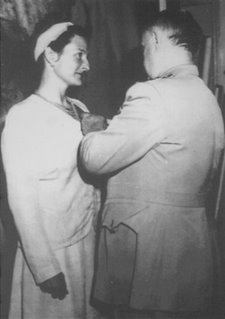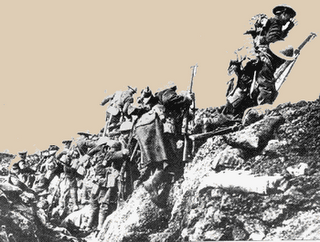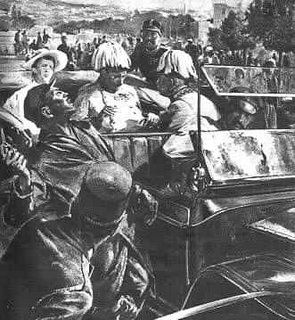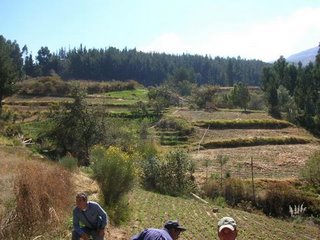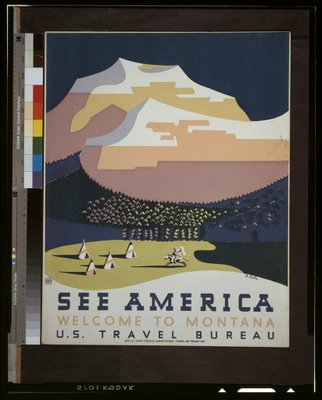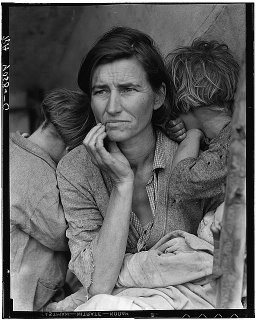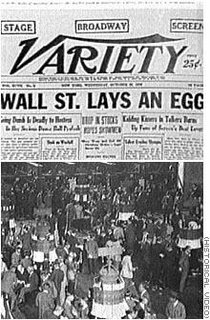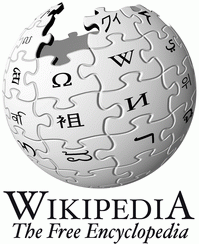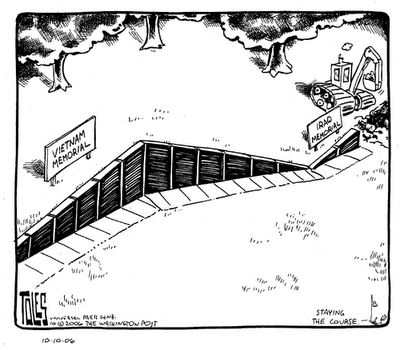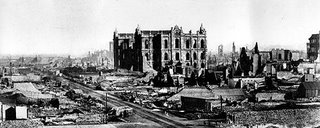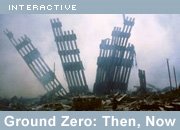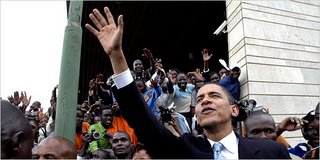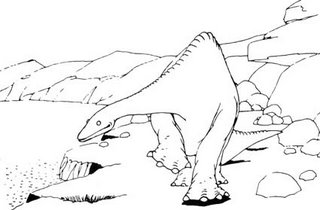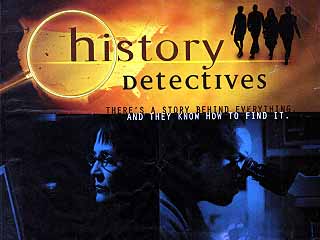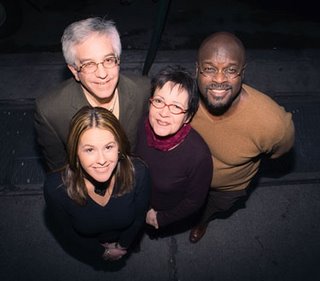Below is a slightly edited editorial from the Chicago Tribune site (click here for the story as published). While the author, Mary Ann Fergus, brings up some good points, there are some sweeping generalizations and assertions which I feel don’t quite fit reality. See my discussion at the end.
SEPT 11 ANNIVERSARY
Bringing 9/11 into classroom
Today's students lived it and are studying it
By Mary Ann Fergus
a Tribune staff reporter
Published September 10, 2006
This weekend, Americans are remembering and reassessing the terrorist attacks of Sept. 11, 2001, in nearly every way we can imagine. But one of the least discussed aspects of that day's legacy may be among the most important: how the attacks are being taught to the generation that will likely view them as one of the landmark events of their lives.
Five years ago Elena Ballara was putting together a book of her pastel drawings and poetry in her junior high school art class when the principal announced that an airplane had just crashed into the World Trade Center. At the time, the 12-year-old knew nothing about Al Qaeda. She had never heard of the World Trade Center. Her overwhelming emotion was fear. "I just remember feeling sheer panic," she said.
Almost immediately, teachers began to discuss the attacks with their students. And in the years since, that has only intensified as the events of Sept. 11 make their way into textbooks and lesson plans. These students benefit from the information age, able to analyze and delve into current events faster than students from previous generations.
Educational supplements were quickly printed after World War I, but how quickly they were used in the classroom is hard to gauge. The wars that followed were discussed in some classrooms; those students, however, didn't experience anything like the wide multimedia coverage of Sept. 11. The Vietnam War was ending just as Julie Peters, an assistant professor of history at the University of Illinois at Chicago, was graduating junior high. By the time she graduated from high school, the subject still hadn't been discussed in class. In contrast, Elena, now a senior at Deerfield High School, has studied Sept. 11 several times in the course of her education.
Today's history students may begin with lessons on Christopher Columbus, but just as important will be the lecture on Osama bin Laden. They will learn about the Industrial Revolution but should also be able to explain the differences between Islam and Islamic fundamentalism. They may be asked to describe the significance of Iwo Jima but should also understand the concept of jihad.
Today's students also bring some misconceptions with them. "My challenge is to separate fact from fiction," said Glenn Simon, a U.S. history teacher at Maine East High School in Park Ridge. Teachers say many students misunderstand the much-disputed connection between Al Qaeda and Iraq, for example. High school juniors enter Simon's class believing erroneously that the 19 hijackers of Sept. 11 were Iraqi.
Many teachers incorporate Sept. 11 into their lessons throughout the year as they discuss the Constitution, the American Revolution, the hysteria that led to the Salem witch trials and the suspicion that followed Arab-Americans after Sept. 11. They draw comparisons too, between the justification for World War I and the Bush administration's decision to invade Iraq, and they compare the national surprise of Pearl Harbor to the shock of Sept. 11.
"You can't ignore it, can't deny it," said Chip Brady, a history teacher at his alma mater, Evanston Township High School, and a finalist for Illinois teacher of the year. "It's part of the year's curriculum. It's not a last-week-of-the-school-year, `Oh, by the way,' lesson."
At Deerfield and at Crystal Lake South High Schools, teachers sometimes assign essay questions at the end of the year that ask students to support their personal stance on the war in Iraq using facts and reasoning. "My overall objective is [to teach] that there are many forces and factors that have played into terrorism, that have led us to where we are today," said Crystal Lake South's Bill Altmann, a social studies teacher.
How often do we hear such goals expressed by the dramatically polarized pundits who inhabit our media? It seems the classroom may be one of the few refuges of calm and steady reason, a place free of sound bites. Not all students get such lessons, for various reasons. Still, the notion that many students are thinking about Sept. 11 and its aftermath with discipline and vigor is promising. The purpose of social studies is to create thinking citizens who make decisions for the public good based on evidence and reason.
"We're teaching social studies not to win on a quiz show with a name and a date," said Roger LaRaus, a historian who instructs student teachers at National-Louis University. The goal is to make students want "to do something, not to simply know something," he said.
Lessons on Sept. 11 are still a work in progress. And before too long, the students who hear those lectures will not remember that day at all.
Other Recourses: 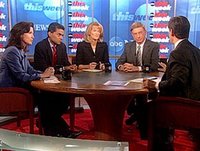
There’s also an article at ABC News, School Kids Looked Bush in the Eye on 9/11, about the class that saw President Bush get the news about the second plane hitting the WTC.
We might we watching part of ABC This Week’s round table (see picture) about 9/11 five years later in class as well. On the program ABC did a poll where something like 46% of people polled think that 9/11 is the biggest event of their lifetime. Although I agree in some ways, it’s really what happened (and, indeed is happening) afterwards that really matters. There also some great video segments on the site.
And lastly, 60 Minutes featured two 9/11 stories. One heartbreaking segment about the children who lost a parent during 9/11 we might be watching in class.
It is amazing to think that in the not too distant future I’ll be teaching students who have no recollection of 9/11. While Mary Ann Fergus’ article has some good points, I think that she’s over-stepping things a bit. Teaching current events in social studies has always been a tricky issue but there is often a lot of room for various interpretations and controversy with the issues.
When teachers are to “lecture on Osama bin Laden” and students “should also understand the concept of jihad” those are subject for whole college courses and books. Can I spend a whole term on 9/11? I could.
That also plays into what the role of a social studies teacher really is. Currently at the 8th grade level social studies has no direct role in NCLB. 9/11 doesn’t fit a teaching standard mandate and only fits under a very broad learning standard. Do most Americans know what a jihad is? I’ve been told by a fellow teacher of mine who has a student named Jihad this year that Americans don’t really understand the concept. Before I heard that I assumed that I did, but I’m not Muslim and I am by no means an expert on Islam.
I think what is more important is what teacher Glenn Simon said in the article: we need to separate fact from fiction. We also need to encourage students to care about world issues, rather than asking, “Why don’t we just nuke them?” or being totally ignorant of the world around them. Students need to realize that people who explain issues have their own slanted viewpoint and often an agenda. Just telling teachers that they have to teach 9/11 isn’t enough. Students need to be able to think and students must care for any kind of learning to take place. And that is a tall order and the challenging task for all teachers.
